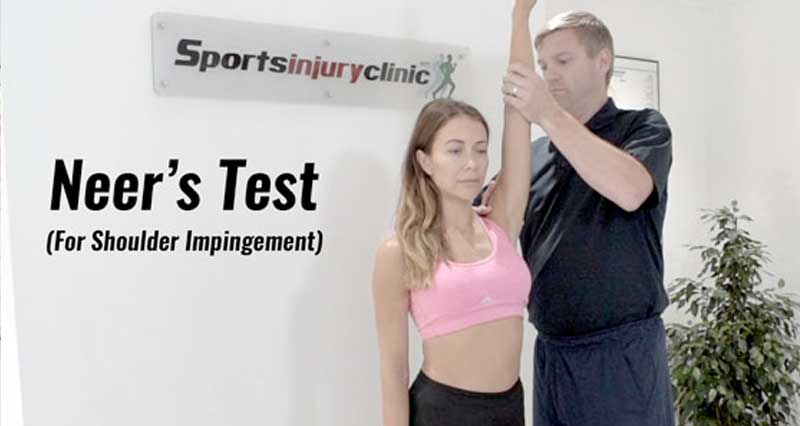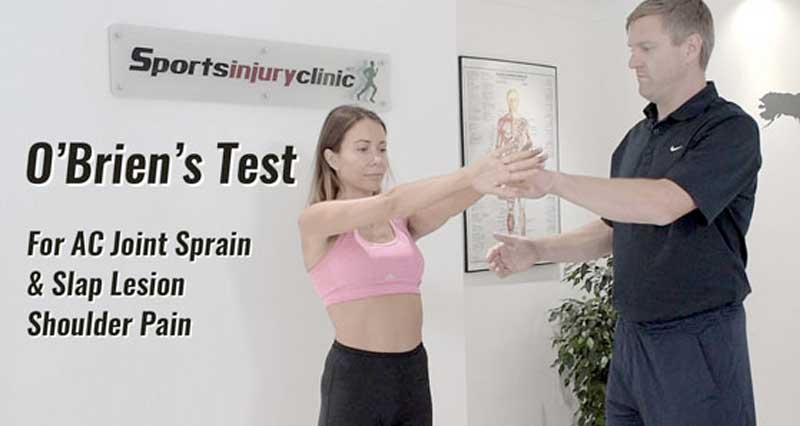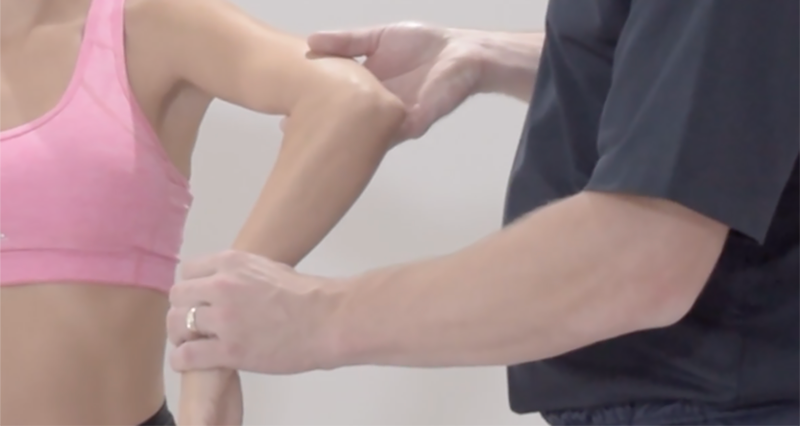The 60-Degree Arc Test, also known as the Painful Arc Test helps identify impingement syndrome in the shoulder.
What is shoulder impingement?
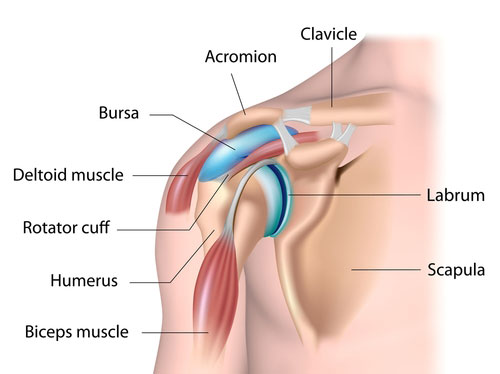
Shoulder impingement, also known as swimmer’s shoulder or thrower’s shoulder, occurs when the tendons of the rotator cuff muscles get trapped or pinched as they move through a narrow bony channel. This channel called the subacromial space, is named because it’s located beneath the arch of the acromion.
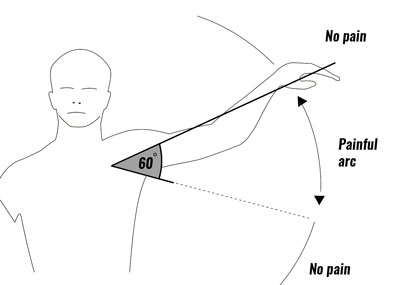
Shoulder impingement commonly causes pain in a 60-degree arc when you lift your arm out sideways and up above the shoulder. Initially, you may feel little or no pain, but then it worsens from about 70 degrees to 130 degrees. If this is the case, then the test is positive and indicates shoulder impingement.
How to perform the shoulder impingement 60-degree arc test
Position the arm at the side with the elbow extended. Then, slowly abduct the arm (move it away from the body side) in the plane of the scapula (about 30 degrees forward from the frontal plane). Focus on observing or palpating the shoulder area, especially the motion between 60 degrees and 120 degrees of abduction.

How do I know if the test is positive?
The test is positive if the patient feels pain between 60 degrees and 120 degrees of abduction. This range matters because it narrows the subacromial space, potentially causing impingement of the rotator cuff tendons or the subacromial bursa.
A positive 60-Degree Arc Test suggests shoulder impingement syndrome. Pain in this specific arc of motion indicates compression or irritation of the structures within the subacromial space. However, pain outside this range may suggest other shoulder pathologies.
The 60-Degree Arc Test alone can’t diagnose shoulder pain. An accurate diagnosis requires a full shoulder exam, including more physical tests, patient history, and possibly MRI or ultrasound. Shoulder impingement often accompanies other issues like rotator cuff tears or bursitis, complicating the diagnosis.
This test is only one component of a comprehensive assessment for shoulder impingement. It informs further tests and treatment plans. Treatment options include physical therapy, anti-inflammatory drugs, or sometimes surgery to ease the impingement.
